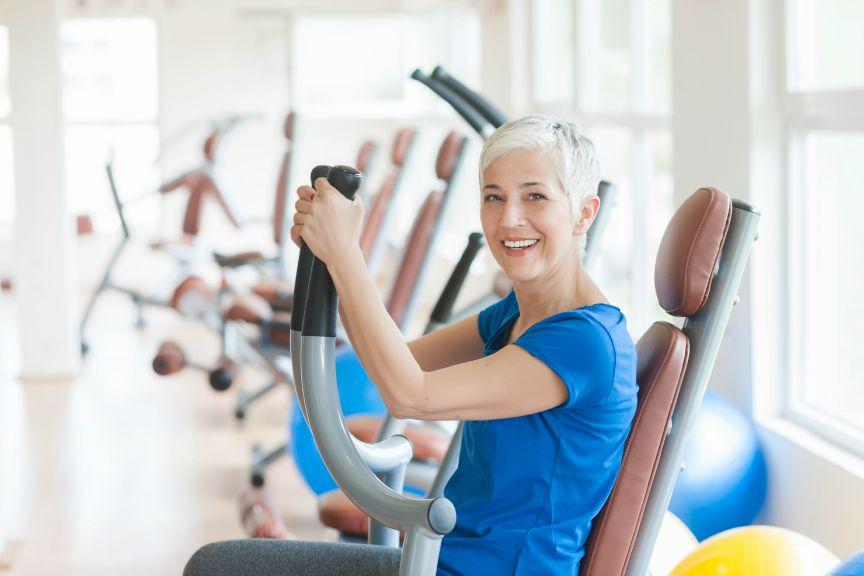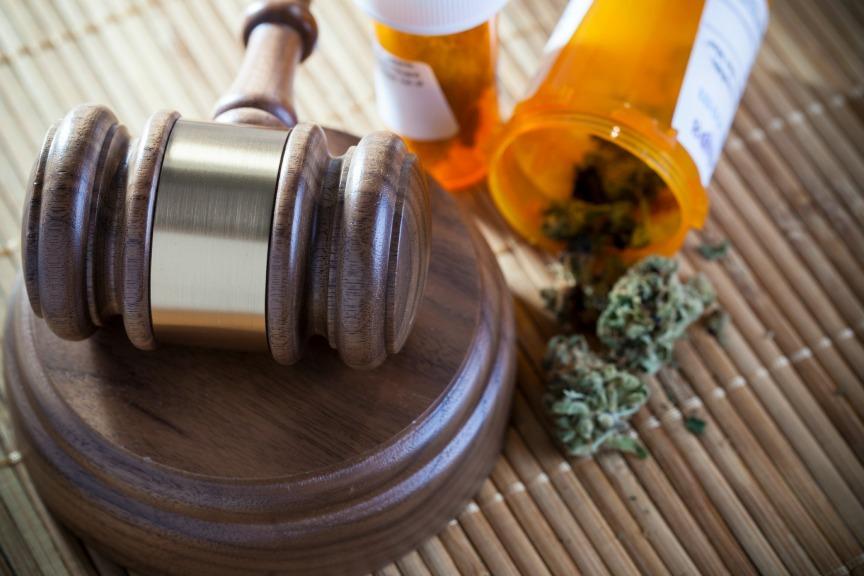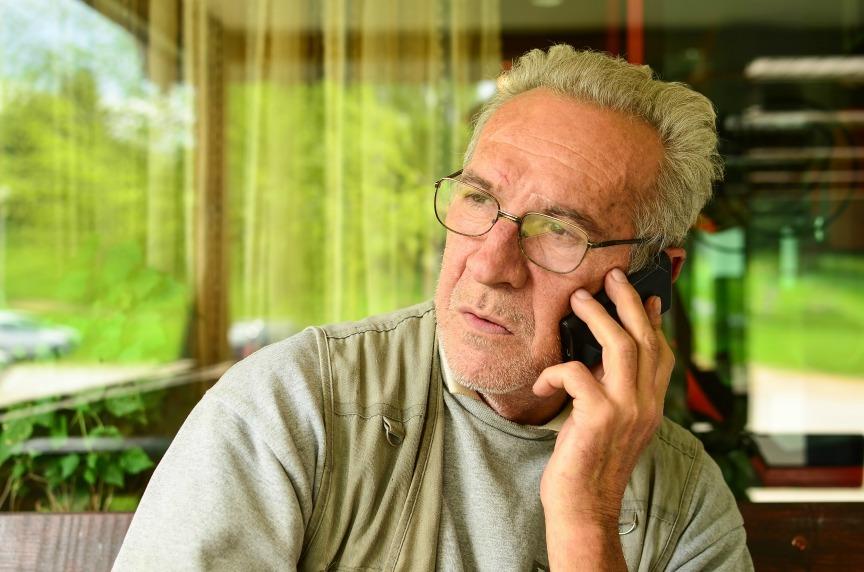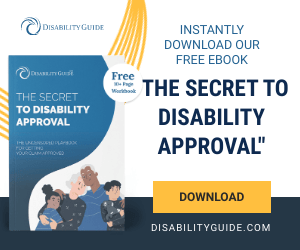Health Tips
How Your Doctor Can Help You Get Approved for Social Security Disability Benefits

When evaluating your Social Security Disability claim, the Social Security Administration (SSA) will look at your medical records and doctor’s opinion to decide whether your condition truly inhibits your ability to work (substantial gainful activity) for at least 12 months. This is why it’s important to see your treating doctor on a regular basis to ensure your medical records are up to date and accurately reflect the number and severity of your symptoms.
But in addition to treatment notes, lab reports, x-rays, and imaging studies, one of the most compelling items the SSA’s Disability Determination Service (DDS) can evaluate is a medical source statement from your primary treating physician.
“A good medical source statement will outline what an individual is capable of performing when it comes to lifting, sitting, standing, and walking,” said Dr. Dale Robbins, M.D. J.D. “If you can have them list any postural and environmental limitations, that would be great as well.”
You can get a medical source statement form from the SSA, or your attorney can draft one for your specific impairment.
“You should approach your primary care provider or the appropriate specialist to fill out the doctor’s letter,” said Robbins. “If you’re suffering from depression and your primary care doctor is treating it, they should be the one to fill it out. But if you’re seeing a psychiatrist for your depression, then you would have your psychiatrist fill it out.”
You shouldn’t feel reluctant to ask for your doctor’s help with your Social Security Disability claim either. Your Social Security Disability approval will only benefit you and your doctor.
“If the patient gets approved for disability insurance or SSI, they will be able to afford ongoing medical care, so it’s better for both the patient and the doctor,” Robbins said.
If you approach your doctor and he or she seems hesitant to fill out the form for your disability application, you can offer to pay for their time. However, if they are still reluctant to help, you may have to move on to the next best choice: a medical professional who is treating you and is familiar with your condition but may not be the one providing primary treatment. Talk to a Social Security disability attorney if you need advice. If your claim lacks medical evidence, you will likely be required to have a consultative exam performed to get another doctor’s opinion.
“The SSA has something called the “treating physician rule,” which means that the treating physician is in the best position to know what is going on with a particular patient in terms of their conditions and care. The most important thing to know about the treating physicians rule is that they are just that – it must be an M.D., D.O., or Ph.D. A nurse practitioner or physician assistant does not qualify under this rule, but nonetheless, if that’s who you can get to fill out a medical source statement, by all means do so,” said Robbins.
If you have any questions about which medical professional(s) you should approach about filling out a medical source statement, consult with your attorney since they will be the most familiar with the SSA’s examination process. You can also contact your local Social Security office. When asking your doctor to fill out a medical source statement, Robbins recommends trying to get them to be as specific as possible, and to focus on the condition(s) that limit your ability to work.
“You don’t want the doctor to consider everything, because then it becomes overwhelming,” said Robbins.
At the end of the day, the biggest thing you can do to help your own case is to be absolutely honest. The SSA will have you complete a form about how you spend your day, and if that form and your medical records or medical source statement are inconsistent, it can be a big red flag and lead to a negative disability decision.
“What I tell my clients every time is to tell the truth. I can deal with the truth,” said Robbins. “It’s when you tell me something that’s not true and then there’s documentation elsewhere in the file that says otherwise, that’s when we have to backtrack.”
For SSDI benefits, what the SSA is looking for is whether your medical condition will keep you from performing substantial gainful activity (not to be confused with SSI, which is income-based). Your doctors can be your biggest advocates in showcasing how your disability interferes with your day-to-day life, and you should work closely with them to document your struggles and limitations. It may require some additional footwork on your part to make sure these limitations are properly documented, but in the end it will be worth the extra effort.
Health Tips
Healthy Living Tip: Low-Impact Exercise for Beginners

If you’re living with a disabling condition, staying in shape might not be at the front of your mind. But the truth is that being fit, even when you’re living with a disability, can do a lot to improve your quality of life. Aside from increasing your endorphin levels—the natural feel-good chemical in your brain—regular exercise is also a great tool for fighting stress and depression and promoting full-body health.
Now I know what you’re thinking: running marathons, jumping in pools, and bench-pressing weights are not things I can or should be doing right now. The good news is that you don’t have to be scaling mountains to have your health in a good place. Low-impact exercise is a great way to stay healthy and strong even if you have a condition that limits your mobility. In fact here’s a great video of a low-impact cardio routine that will get you sweating:
Keep in mind that even this routine might be too strenuous for your condition. Just exercise at the pace that works for you and be patient with yourself if you need to take a rest. It’s also a good idea to consult your doctor when trying any new kinds of exercise to make sure it’s safe for your condition.
To learn even more about the importance of getting fit, check out our blog post on exercising with a disability.
Health Tips
Healthy Living Tip: 7 Ways to Beat Your Stress

In our fast-paced world, anxiety and stress have pretty much become a way of life. And I speak from personal experience when I say stress is the pits. As a perfectionist, an introvert, and an all-around worried person, I understand that sometimes your stress goes into overdrive. Feeling like you can’t do anything about it only makes the problem worse.
But you can do something about it! I’m not saying there’s a magical pill or a mystical yoga routine for beating stress. (Although if you do ever hear about one, please let me know.) What I’m saying is there are things you can do to make your internal life less hectic. Here are seven simple ways that I like to soothe my stress:
1. Make a list—One of my tried and true methods of stress reduction is list-making. Writing things down is a great way to gather your thoughts and come up with a plan, so write down everything you need to do or a list of ways to fix your problem. You’ll be able to see your thoughts on paper plus have the added benefit of not forgetting anything.
2. Go on a walk—Exercise is an awesome way to get your mind off things. So if you’re pushing to your breaking point, set aside twenty minutes to go on a quiet walk by yourself or with a friend. Spending time in nature has been scientifically proven to reduce stress in case you didn’t know.
3. Eat a snack—Dealing with stressful daily drama on an empty stomach isn’t a good plan for anyone, so do what you can to keep your blood sugar from dropping. Eat smaller meals more frequently to keep your energy up. Plan ahead for stressful weeks by packing yourself some nutritious snacks. Berries, chopped vegetables, and plain almonds are some of my personal favorites.
4. Get a massage—Confession: this is my favorite stress-reduction tip of all time. Massage therapy has a shocking number of emotional and physical benefits, and if you’re feeling stressed out, chances are you’re carrying that tension somewhere in your body. Take a load off and visit a massage therapist in your area. You can jump online to find one with good reviews or look on Groupon for an inexpensive option.
5. Get more sleep—Okay, maybe this something I’m not the best at, but getting enough sleep is essential to maintaining healthy stress levels. Shoot for more than seven hours of uninterrupted sleep every night and try to get to bed before midnight. If you’re so stressed out that you can’t sleep at all, try natural remedies like sleepy chamomile tea, essential oils, or a warm cup of milk before bed. If your sleepless nights persist, be sure to talk to your doctor.
6. Take a breather—I don’t know about you, but the things that stress me out the most are things that I can’t control. And when life feels especially crazy and unfixable, it might just be time for a break. Open up your laptop to watch some cat videos. Start a new creative project. Watch your favorite movie. Whatever it is you enjoy, carve out a little bit of time to do it. And if nothing helpful is coming to mind, take fifteen minutes to lie down in a dim room and breathe in and out deeply. Trust me, it makes a difference.
7. Talk to somebody—Stress isn’t something you have to take on alone. If you’re feeling consistently anxious, talk to a close friend about how you’re feeling. It may not sound like much, but verbal processing will do you a lot of good. And if your anxiety becomes unmanageable or you find yourself feeling stressed out a majority of the time, it might be time to talk to a professional. Ask your doctor for recommendations.
For more healthy living tips, check out our blog posts on yoga stretches that reduce lower back pain and all the benefits of vitamin D.
Health Tips
Healthy Living Tip: 7 Ways to Save Your Skin

Summer sunshine is a glorious thing, but too much of it can be . . . how should I put it? Not quite so glorious. And in some cases it’s downright painful. Luckily there are lots of common-sense methods for keeping sunburns at bay this time of year.
So to help you save your skin, here are seven quick tips for protecting yourself from getting toasted:
1. Cover up—This is hands-down the easiest way to shield yourself from the sun. Put on a hat and try to cover up bare skin with loose, light-colored clothing. Resist the urge to go shirtless!
2. Wear sunscreen—Your mother has been telling you this for years. so take a page out of her book and go for SPF 30 or higher. Also be sure to reapply your sunscreen at least every two hours and throw out any sunscreen that’s expired. Old sunscreen won’t protect you.
3. Wear sunglasses—Even your eyes need protection from the sun, so pick up a pair of sunglasses. And be sure to check the label to make sure they’re blocking 99 to 100 percent of UVA and UVB rays.
4. Listen to your doctor—If you’re on a medication that makes you sensitive to the sun, take care of yourself. Antibiotics, anti-inflammatories, antifungals, or blood pressure medications are all good reasons to avoid direct sunlight, and procedures like chemotherapy or laser hair removal can make you extra sensitive too. So follow your doctor’s instructions to the letter.
5. Don’t tan!—I cannot say it enough times: when the urge to seek out a tanning bed hits you, resist! Tanning beds and tanning lamps expose you to harmful UVA and UVB rays that can cause permanent skin damage, and a bronze skin tone just isn’t worth that. Trust me.
6. Seek out shade—Whenever possible, give your skin a break. Go sit under a leafy tree. Try to walk in the shade. And also keep a lookout for conditions that intensify the sun’s rays. Water, snow, white sandy beaches, and even cloud cover can reflect sunlight and cause serious sunburns.
7. Go inside—I know it’s the last thing you want to do on a beautiful day, but try to limit your sun exposure between 10:00 a.m. and 4:00 p.m. when UV rays are strongest. If you ever feel yourself starting to burn or getting dizzy, go inside an air-conditioned building immediately.
Looking for more ways to stay healthy this summer? Check out this cool blog post on all the reasons you should drink more water.
-

 About SSI & SSDI10 years ago
About SSI & SSDI10 years ago6 Different Types of Service Animals
-

 Getting Approved11 years ago
Getting Approved11 years agoWill Medical Marijuana Affect My Social Security Disability Case?
-

 Getting Approved10 years ago
Getting Approved10 years agoQuick Tip: List Your Attorney as a Contact for the SSA
-

 About SSI & SSDI9 years ago
About SSI & SSDI9 years agoSSDI or SSI: What Makes These Programs Different?
-

 Getting Approved10 years ago
Getting Approved10 years ago10 Ways to Keep Your Mind Sharp
-

 News9 years ago
News9 years agoWhy Would You Need to Contact the SSA?
-

 Getting Approved11 years ago
Getting Approved11 years agoCan Social Media Activity Affect My Disability Case?
-

 About SSI & SSDI10 years ago
About SSI & SSDI10 years agoSocial Security and Divorce: 8 Things You Should Know


